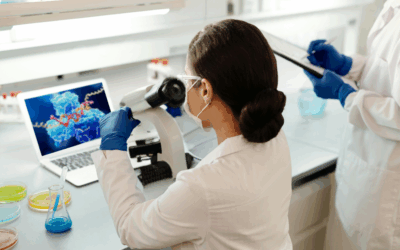Since 1978, when the U.S. FDA issued the Guidance for Industry Good Laboratory Practices Regulations, Good Laboratory Practices (GLP) have been an essential part of the quest to ensure the highest standards in drug development.
GLP regulations have ensured that nonclinical animal studies are conducted to the highest standard, but they are not always necessary in a toxicological study. Non-GLP studies, deployed at the right time, can offer huge advantages to drug developers. Here, we will explore the difference between GLP and non-GLP studies and determine when to use which.
What are Good Laboratory Practices?
The U.S. FDA’s guidance in 1978 was issued in response to a perceived lack of scientific integrity and quality in nonclinical toxicology studies at the time. It was proceeded by similar guidance issued in New Zealand and Denmark in 1972.
The Organization for Economic Co-operation and Development (OECD) adopted the GLP guidelines many years later, in 1992, in order to promote them at a global scale. OECD wanted to raise the quality of testing to such a level that data was acceptable across borders.
From that point on, GLP regulations have been used worldwide to ensure nonclinical health and safety studies are planned diligently, monitored efficiently, recorded meticulously, archived methodically and reported consistently.
When is GLP Required?
GLP regulations are required for most nonclinical toxicological studies, including those required for IND submission. Sponsors and laboratory testing partners must comply with laws covering GLP in the United States.
GLP standards focus on the organizational process and the conditions for performing studies, and stress the importance of the following:
- Qualified staff working in appropriate facilities with the correct equipment and materials. Records must be kept of personnel qualifications and their duties.
- Establishing a quality control system, which should be documented by staff not directly involved in the study.
- The study director has to commit to a study plan and seek authorization for any variation.
- Safe working conditions.
- A suitably sized location for the study, wherein outside elements are minimized and different activities are separated.
- The correct handling of test and reference substances to avoid contamination. Waste disposal should also be conducted properly to avoid jeopardizing the integrity of studies.
- Apparatus, reagents and test systems should be of proper quality and design, and labeling should be exact.
When Can Non-GLP Testing be Considered?
There are some instances or stages in nonclinical testing where drug manufacturers do not need to adhere to GLP. These include general in vitro toxicology studies, genotoxicity, mutagenicity and safety pharmacology.
If a drug sponsor is looking to investigate preliminary drug safety by obtaining data on the drug’s absorption, distribution, metabolism and elimination (ADME) properties, they may decide to conduct this stage of research outside GLP requirements. This will give the sponsor a clear picture of how tolerable the drug is in various systems prior to performing a further study where GLP is required.
Non-GLP studies at an early stage in the drug development process can minimize the risk of failure during preclinical studies, and help sponsors decide if the program is worth moving forward. Because of the decreased regulatory scrutiny, non-GLP studies can be carried out with shorter testing durations, smaller sample sizes, and faster report delivery.
This streamlined process is possible because the following are not required:
- Quality assurance does not have to inspect the conduct of studies or records.
- Analysis of the concentration of the test article dosing solutions is not required.
- Complete study reports are not necessary, so alternatives like data summaries are acceptable.
- Methodological validation through quality control is not required.
However, it is important to note that although some studies do not need to adhere to GLP regulations, they must still produce high quality data that is reviewed and reliable. Myriad regulatory agencies and the pharmaceutical industry itself have emphasized the importance of assessing drug safety in in vitro interaction studies, even though they are technically non-GLP studies. The U.S. FDA has said that such studies should be carried out “in the spirit of GLP.”
Because of this stipulation, drug sponsors may sometimes request GLP testing to cover their bases even when it is not strictly required. An experienced laboratory testing partner will be able to properly discern when GLP studies are required or a best practice, and what will only add time and money to the budget.
A Final Word
Many drug sponsors may benefit from the ease of conducting non-GLP toxicity testing at a very early stage in drug development. With less stringent requirements on sample size and testing durations, researchers are able to accelerate decisions on whether a drug development project is viable. Conducting GLP studies when they are not required can cost the drug sponsor both time and money. Therefore, it is in a drug sponsor’s best interest to work with a quality laboratory testing partner who is able to properly determine the necessity of a GLP study versus a non-GLP study.
As a global company with operations across Asia, Europe, and North America, WuXi AppTec provides a broad portfolio of R&D and manufacturing services that enable the global pharmaceutical and life sciences industry to advance discoveries and deliver groundbreaking treatments to patients. Through its unique business models, WuXi AppTec’s integrated, end-to-end services include chemistry drug CRDMO (Contract Research, Development and Manufacturing Organization), biology discovery, preclinical testing and clinical research services, helping customers improve the productivity of advancing healthcare products through cost-effective and efficient solutions. WuXi AppTec received an AA ESG rating from MSCI for the fourth consecutive year in 2024 and its open-access platform is enabling around 6,000 customers from over 30 countries to improve the health of those in need – and to realize the vision that “every drug can be made and every disease can be treated.”


